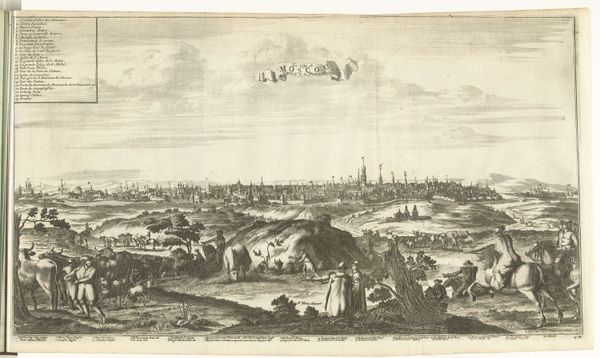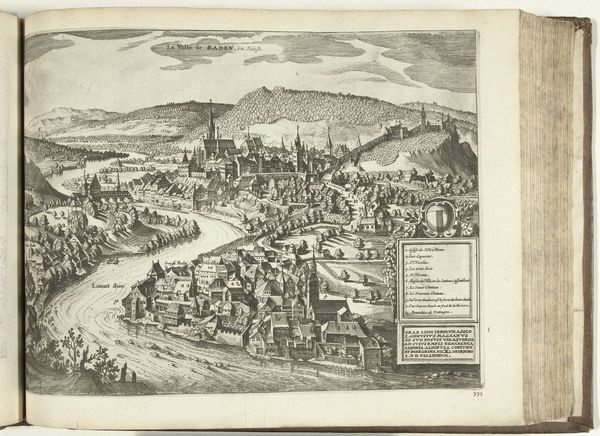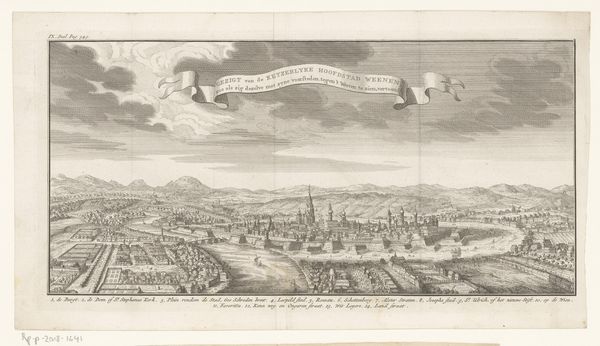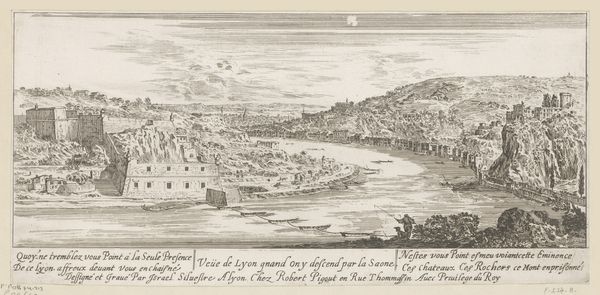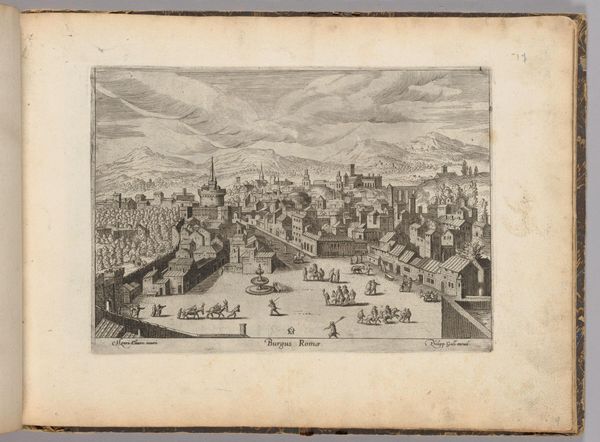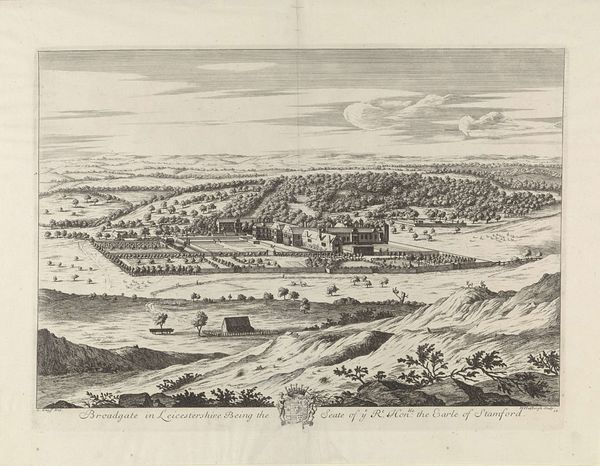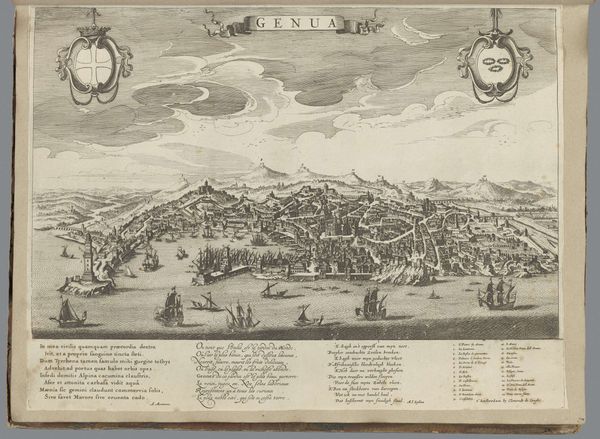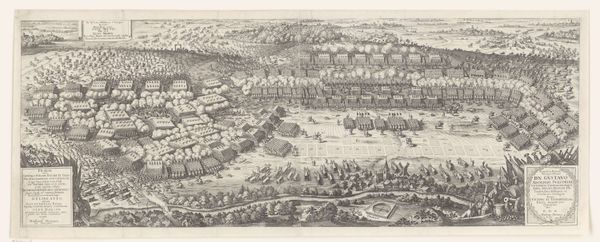
print, etching, engraving
# print
#
etching
#
landscape
#
cityscape
#
islamic-art
#
engraving
Dimensions: height 300 mm, width 390 mm
Copyright: Rijks Museum: Open Domain
Editor: So, here we have a piece called "Gezicht op Isfahan, 1726", or "View of Isfahan, 1726". It's an etching, engraving and print. Looking at it, I’m struck by the detail. It's a bustling cityscape, but from such a distant bird's-eye perspective. I'm curious, what catches your eye most about this work? Curator: Well, aside from the elephant parade which frankly stole my attention, I keep getting sucked into those intricate lines depicting the city itself. It’s as if someone bottled the very air of Isfahan from nearly three centuries ago! It really brings home that cities aren't static things frozen in time but they're always morphing and evolving—don't you think? And consider what it must have taken for someone to survey it to even begin this thing. Makes me sweat just thinking about it. Editor: Absolutely, the detail is astounding. To think someone mapped this all out by hand, it's humbling! But does the European perspective distort how we understand Isfahan here? Curator: I think it's important to acknowledge it’s a constructed vision, naturally colored by the artist’s experiences. Did they visit the place? Likely not, that changes things profoundly. Maybe they had it pieced together, I’m imagining someone recounting their experiences in great detail over Turkish coffee and honey cakes. This rendering offers a glimpse, yes, but one that demands questioning what might be skewed or romanticized. A bit like those Insta filters we throw on our selfies! Editor: I never considered the European filter before, but it’s an angle that reveals the image is as much about the artist’s world as it is about Isfahan. Thanks for making that clear. Curator: Glad to nudge you! After all, art invites us into conversation—both with the work and ourselves, right?
Comments
No comments
Be the first to comment and join the conversation on the ultimate creative platform.


